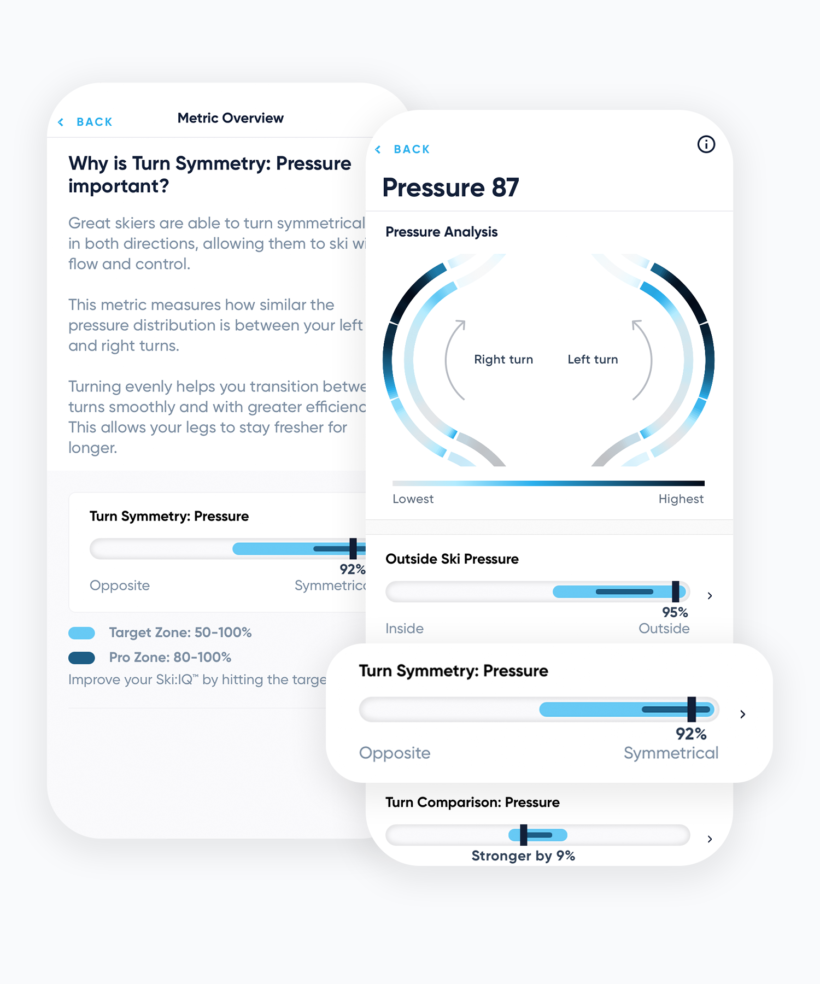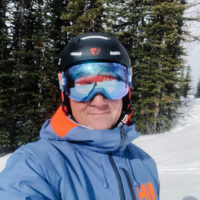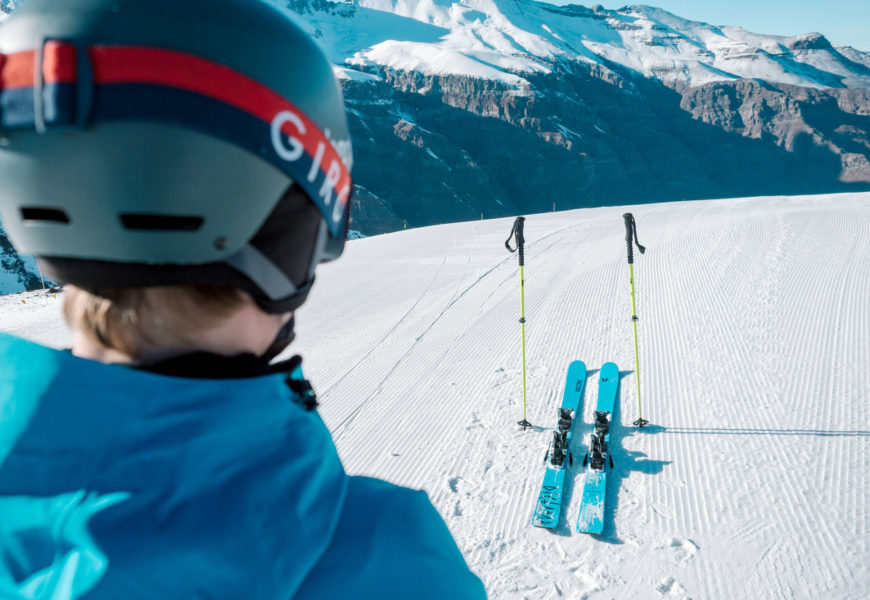Improving Your Turn Symmetry

Votes:
Having symmetry is key
One of the many aspects of skiing to focus on this season is symmetry (both turn and ski edges). This symmetry is ultimately achieved by the blending of all the key skiing skills, in a rhythmical fashion suited to your ski environment.

For me, one of the keys to symmetrical ski turns boils down to the timing: this timing allows me to constantly execute a pattern that I can do on each side of the fall line. For my first runs of the day, I move to a consistent slope (green or blue) where some of the many variables can be controlled.
As I get into my proper mobile and balanced stance (see my previous article on balance), I start sliding. I say to myself “Down-2-3”: this phrase is important for my turn symmetry as it is simple, concise and has a rhythmical cadence to it (like a metronome). I say my phrase repeatedly in my head for the entire run: “Down-2-3, Down-2-3”.
Let’s break my phrase down into the timing actions specific to the part of the turn:
Down - tells me to keep my shoulders down so that I do not lift my shoulders as I enter the fall line (a vertical move would raise my center of mass and result in a loss of contact with the snow).
2 - when I am fully committed to the fall line
3 - I have now changed directions as I exit the fall line.
The continuous repetition of my phrase and using the same cadence allows me to achieve the same rounded turn left and right (most days it should only take 5 or 6 turns to find this rhythm).
As the speed and terrain difficulty increase, this symmetry becomes more difficult because people have a tendency to put more faith in their dominant leg, which results in an asymmetrical ski turn. To help combat asymmetrical turning on the slope, try to commit to the new outside ski before you enter the fall line.
"To help combat asymmetrical turning on the slope, try to commit to the new outside ski before you enter the fall line."
When doing this, move to a gentler slope as this new movement pattern will likely feel unstable at first and you want to set yourself up for success. As your comfort builds on the gentle slope, increase the speed first then move to a steeper piste at a reduced speed.
By spending the same amount of time in each turn, you develop a rhythm that will feel effortless to you and look great to anyone watching from the chairlift!
Find out your own edge symmetry
We designed the Carv app to show you exactly how symmetrical your turns are.
- In the Run Summary, you'll find two metrics related to Turn Symmetry.
- Turn Symmetry: Edging shows you how symmetrical your edge angles are between your left and right turns.
- Turn Symmetry: Pressure (shown here) is a measure of your pressure distribution between your left and right turns.

Help fix it at home
Try a lunge or overhead lunge
When doing this exercise, focus on keeping a tight core while maintaining proper lunge form. The lunge allows you to balance and maintain pressure on one leg, resulting in better commitment to the outside ski whilst you're on the snow.
"The lunge allows you to balance and maintain pressure on one leg, resulting in a better commitment to the outside ski whilst you're on the snow."

Make sure you keep your head level, maintain your gaze forward and hold your chest up. As you lunge, ensure that your foot is planted using the triangle in the illustration below. The same balance points apply to your ski boot.
As you bend down, ensure that the knee does not travel past your toes to protect against muscle overstrain.
N.B. As always, be sure to consult your doctor before starting or changing your workout routine, as bodyweight exercises may not be appropriate for those with underlying conditions or prior surgeries.
Want to improve your skiing?

Written by: Morgan Engel
CSIA Level 4 Instructor
A bit about me: I have been instructing/teaching and coaching the sport of skiing for 28 years in a wide range of capacities, from head coach of a racing club to instructor training, but always as a ski instructor to the public. My certifications are CSIA Level 4 and a Level 3 course conductor, ACA Development level race coach and a Canfitpro certified personal trainer. I currently sit on the CSIA National Board as the Alberta Representative, as well as on the CSIA regional board of Alberta.


